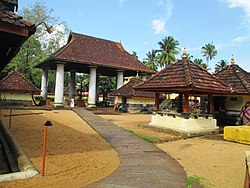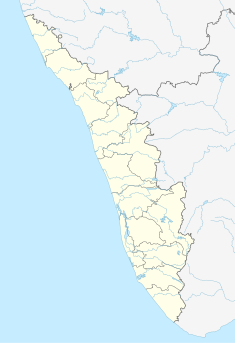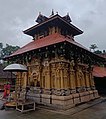Thiruvanchikulam Temple
| Thiruvanchikulam Temple തിരുവഞ്ചിക്കുളം ക്ഷേത്രം | |
|---|---|
 | |
| Location | Thrissur, Kerala, India |
| Coordinates | 10°12′37″N 76°12′24″E / 10.2103°N 76.2066°E |
| Elevation | 27.98 |
| Built | 9th century |
Thiruvanchikulam Siva Temple (medieval Thiruvanchaikkalam Temple
The presiding deity is revered in the 7th century Tamil Saiva canonical work, the
History

This is the only Thevaram Paadal Petra Shiva sthalam in Kerala. Shiva is the family god of the
The capital city of the
Architecture
The temple is built in
Religious importance and festivals

It is believed that it the temple where
The temple priests perform the
References
- ^ Narayanan, M. G. S. Perumāḷs of Kerala: Brahmin Oligarchy and Ritual Monarchy: Political and Social Conditions of Kerala Under the Cēra Perumāḷs of Makōtai (c. AD 800 - AD 1124). Thrissur (Kerala): CosmoBooks, 2013. 49.
- doi:10.5617/ao.4454.
- ^ "Thiruvanchikulam Mahadeva Temple". Mahadeva. Retrieved 11 March 2024.
- ^ "Thiruvanchikulam Mahadeva Temple". India9.com. Retrieved 16 June 2012.
- ^ "Thiruvanchikulam Mahadeva Temple". MustseeIndia. Retrieved 16 June 2012.
- ^ "Thiruvanchikulam". HolyIndia. Retrieved 16 June 2012.
- ^ a b c R., Dr. Vijayalakshmy (2001). An introduction to religion and Philosophy - Tévarám and Tivviyappirapantam (1st ed.). Chennai: International Institute of Tamil Studies. pp. 106–7.
- ^ "Sri Mahadeva temple". Dinamalar. 2014. Archived from the original on 4 August 2016. Retrieved 24 November 2015.










